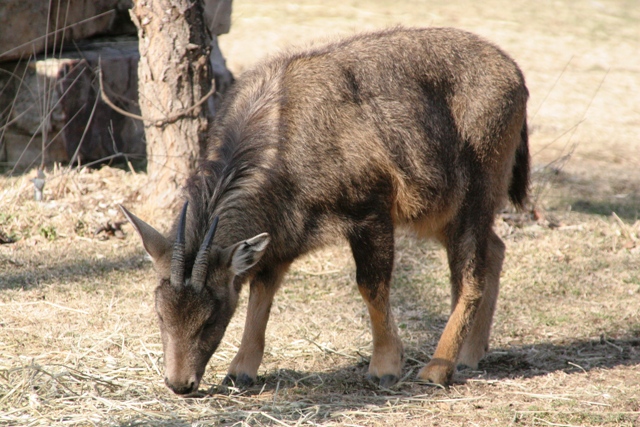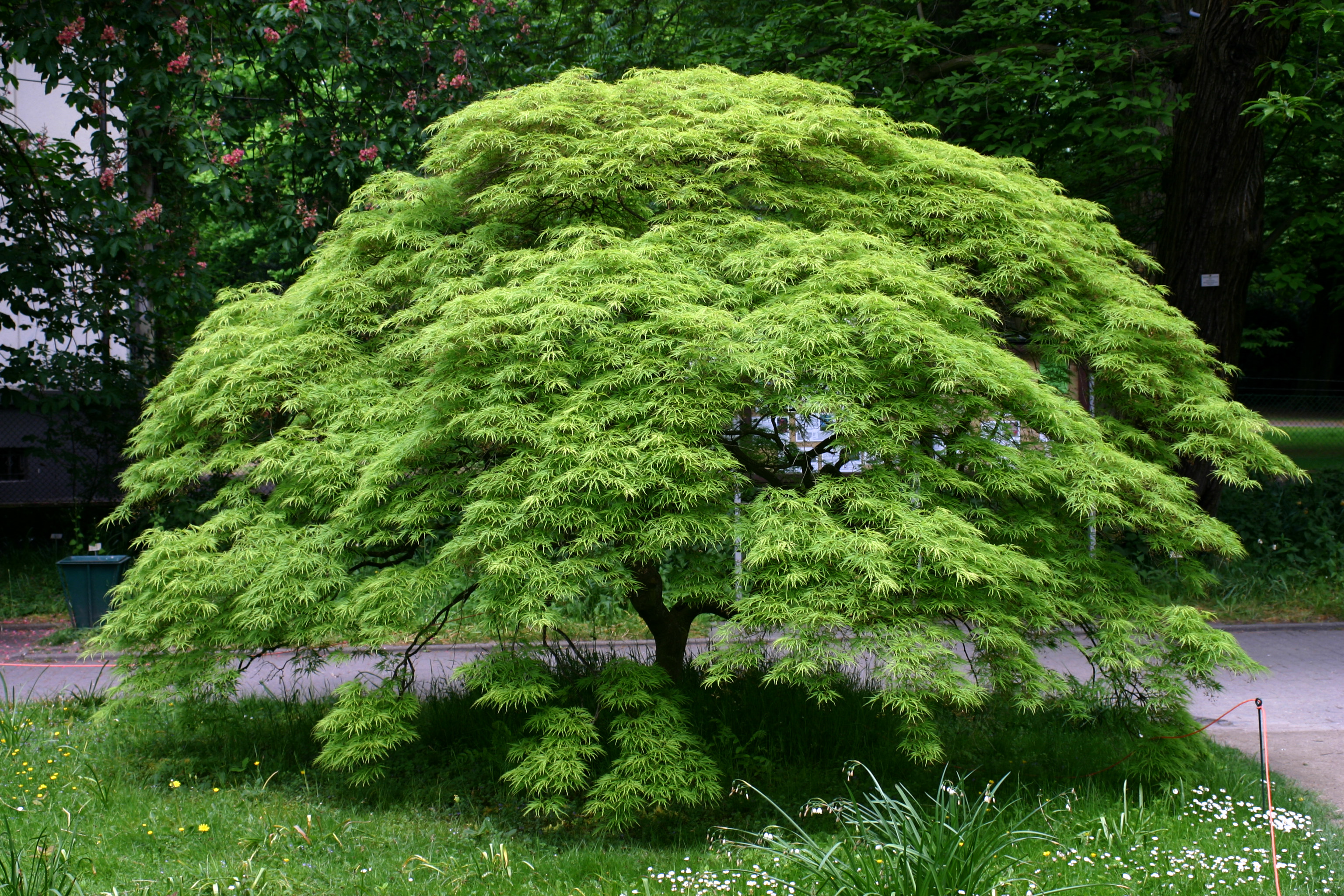|
Sobo, Katamuki And Okue Biosphere Reserve
The Sobo, Katamuki and Okue Biosphere Reserve also known as was created in 2017. It incorporates the 1965 quasi national parks of Sobo Katamuki Prefectural Natural Park (Ōita) (also previously known as the Sobo-Katamuki Quasi-National Park, ) and Sobo Katamuki Prefectural Natural Park (Miyazaki). Geography The reserve derives its name from Mount Sobo (), () and , also known as Mount Ōkue (). The Quasi-National Park borders two homonymous Prefectural Natural Park, Prefectural Parks, namely the Sobo Katamuki Prefectural Natural Park (Ōita) and Sobo Katamuki Prefectural Natural Park (Miyazaki). Geology The landforms of the Biosphere Reserve are the heavily modified result of volcanic activity over the last 14 million years. A massive eruption about 13.7 million years ago involved the Okueyama Volcano-plutonic Complex, and measured 8.0 on the Volcanic Explosivity Index.Daisuke, Miura; Yutaka, Wada (2007)"Middle Miocene ash-flow calderas at the compressive margin of southwest J ... [...More Info...] [...Related Items...] OR: [Wikipedia] [Google] [Baidu] |
Mount Sobo
is one of the 100 Famous Japanese Mountains. The mountain lies on the border of Taketa and Bungo-ōno in Ōita Prefecture and Takachiho, Nishiusuki District in Miyazaki Prefecture. It is within the Sobo, Katamuki and Okue Biosphere Reserve. Mount Sobo is the highest peak in Miyazaki Prefecture and in Ōita Prefecture only the middle peak of Mount Kujū is higher. The Sobo Mountain range extends into three prefectures: Ōita, Miyazaki and Kumamoto. Because of the volcanic activity which formed the mountain, huge rocks can be found everywhere around the mountain. There is a great variety of mountain climbing routes, ranging from animal trails to well maintained paths. Courses ae available from relaxed hiking for enjoyment to cliff climbing routes aimed at advanced climbers. Steep rock climbing routes can be seen from all trails in the neighbourhood of the summit. The surroundings of Mount Sobo abound in mineral resources which were mined from the Edo period to the mid- ... [...More Info...] [...Related Items...] OR: [Wikipedia] [Google] [Baidu] |
Aso Caldera
Aso caldera (also known as Asosan, the Aso Volcano or Mount Aso, although the later term usually is used related to its currently active vents) is a geographical feature of Kumamoto Prefecture, Japan. It stretches 25 kilometers north to south and 18 kilometers east to west. The central core "Aso Gogaku" is the five major mountains in the area. Aso valley (Asodani) runs along the northern base of Mount Aso and Nango valley (Nangodani) along the south. According to research of caldera sediment, lakes used to exist in these valleys. The dried up lake areas have come to be called Old Aso Lake, Kugino Lake, and Aso Valley Lake. The Kikuchi, Shirakawa and Kurokawa rivers now drain the caldera. Geology Within the caldera are more than 17 cones. The central "Aso Gogaku" group of volcanoes are Takadake (Mount Taka) at , Nekodake at , Nakadake (Mount Naka) at , Kijimadake at and Eboshidake at . These are higher than the caldera rim itself that towards the south west is high. Other ... [...More Info...] [...Related Items...] OR: [Wikipedia] [Google] [Baidu] |
Japanese Dormouse
The Japanese dormouse (''Glirulus japonicus'') is a species of rodent in the family Gliridae endemic to Japan. It is the only extant species within the genus ''Glirulus''.Holden, M. E.. 2005. Family Gliridae. pp. 819–841 ''in'' Mammal Species of the World a Taxonomic and Geographic Reference. D. E. Wilson and D. M. Reeder eds. Johns Hopkins University Press, Baltimore. Its natural habitat is temperate forests. In Japanese, it is called ''yamane'' ( やまね or 山鼠). Among dormice, it has the special ability of running at great speed upside down, suspended from branches. Its main food is fruit, insects, berries, nuts, and even flowers. It tends to inhabit arboreal nesting sites to avoid interspecific competition with the small Japanese field mouse (''Apodemus argenteus'') because of their sympatric relationship. Description Japanese dormice have a similar appearance to squirrels and mice. Japanese dormice are some of the smallest types of dormice only weighing u ... [...More Info...] [...Related Items...] OR: [Wikipedia] [Google] [Baidu] |
Asian Black Bear
The Asian black bear (''Ursus thibetanus''), also known as the Asiatic black bear, moon bear and white-chested bear, is a medium-sized bear species native to Asia that is largely adapted to an arboreal lifestyle. It lives in the Himalayas, southeastern Iran, the northern parts of the Indian subcontinent, the Korean Peninsula, China, the Russian Far East, the islands of Honshū and Shikoku in Japan, and Taiwan. It is listed as Vulnerable species, vulnerable on the IUCN Red List, and is threatened by deforestation and poaching for its body parts, which are used in traditional medicine. Characteristics The Asian black bear has black fur, a light brown muzzle, and a distinct whitish or creamy patch on the chest, which is sometimes V-shaped. Its ears are bell shaped, proportionately longer than those of other bears, and stick out sideways from the head. Its tail is short, around long.#Brown, Brown, ''Bear Anatomy and Physiology'' Adults measure at the shoulder, and in length. Adu ... [...More Info...] [...Related Items...] OR: [Wikipedia] [Google] [Baidu] |
Sasakia Charonda
''Sasakia charonda'', the Japanese emperor or great purple emperor, is a species of butterfly in the family Nymphalidae. It is native to Japan (from Hokkaidō to Kyūshū), the Korean Peninsula, China, northern Taiwan and northern Vietnam. Its wingspan averages for males, and for females. They are common in the upper canopies of forests, only coming down to feed or to find salt sources. The larvae of the species feed on hackberries, like '' Celtis jessoensis'', ''Celtis japonica'' and ''Celtis sinensis''. ''S. charonda'' is the national butterfly of Japan, where it is known as or (''ō-murasaki'', "great purple"). Its Chinese name is (Traditional Chinese, ''dàzǐjiádié'', "big purple butterfly") and the Korean name is , which means "king five-coloured butterfly". See also *List of butterflies of Taiwan A ''list'' is any set of items in a row. List or lists may also refer to: People * List (surname) Organizations * List College, an undergraduate division of the ... [...More Info...] [...Related Items...] OR: [Wikipedia] [Google] [Baidu] |
Hynobius Shinichisatoi
''Hynobius shinichisatoi'', the Sobo salamander, has only been found in streams in the Sobo, Katamuki and Okue Biosphere Reserve, Japan. It is black in colour. It had previously been described as: *''Pachypalaminus boulengeri'' Satō, 1954 *''Hynobius (Pachypalaminus) boulengeri partim'' Nakamura & Ueno, 1963 *'' Hynobius boulengeri partim'' Nishikawa et al., 2001 Thus see also '' Hynobius boulengeri''. External linksArticle explaining the wide divergence of Hynobius salamaders in Honshu from the late Miocene References shinichisatoi Endemic amphibians of Japan Amphibians described in 2014 {{salamander-stub ... [...More Info...] [...Related Items...] OR: [Wikipedia] [Google] [Baidu] |
Japanese Serow
The : (''Capricornis crispus'') ( 羚羊) is a Japanese goat-antelope, an even-toed ungulate mammal. It is found in dense woodland in Japan, primarily in northern and central Honshu. The serow is seen as a national symbol of Japan, and is subject to protection in conservation areas. Adult Japanese serow stand about tall and weigh . They are black to whitish, and colouring lightens in summer. The fur is very bushy, especially the tail. Both sexes have short, backwards-curving horns, and are difficult to distinguish by sight. Japanese serow are found in dense mountain forests where they eat leaves, shoots, and acorns. They are diurnal and feed in early mornings and late afternoons. Serows are solitary, or gather in couples or small family groups. The animal marks its territory with sweet-and-sour-smelling preorbital gland secretions, and males and females have separate territories that may overlap. In the mid-20th century, the Japanese serow was hunted to near-extinction. ... [...More Info...] [...Related Items...] OR: [Wikipedia] [Google] [Baidu] |
Angelica Ubatakensis
''Angelica'' is a genus of about 60 species of tall biennial and perennial herbs in the family Apiaceae, native to temperate and subarctic regions of the Northern Hemisphere, reaching as far north as Iceland, Lapland, and Greenland. They grow to tall, with large bipinnate leaves and large compound umbels of white or greenish-white flowers. Found mainly in China, its main use was for medicine. It shows variations in fruit anatomy, leaf morphology, and subterranean structures. The genes are extremely polymorphic. Some species can be found in purple moor and rush pastures. Characteristics ''Angelica'' species grow to tall, with large bipinnate leaves and large compound umbels of white or greenish-white flowers. Their large, sparkling, starburst flowers are pollinated by a great variety of insects (the generalist pollination syndrome), the floral scents are species-specific, and even specific to particular subspecies. The active ingredients of angelica are found in the roots ... [...More Info...] [...Related Items...] OR: [Wikipedia] [Google] [Baidu] |
Pinophyta
Conifers are a group of cone-bearing seed plants, a subset of gymnosperms. Scientifically, they make up the division Pinophyta (), also known as Coniferophyta () or Coniferae. The division contains a single extant class, Pinopsida. All extant conifers are perennial woody plants with secondary growth. The great majority are trees, though a few are shrubs. Examples include cedars, Douglas-firs, cypresses, firs, junipers, kauri, larches, pines, hemlocks, redwoods, spruces, and yews.Campbell, Reece, "Phylum Coniferophyta". Biology. 7th. 2005. Print. P. 595 As of 1998, the division Pinophyta was estimated to contain eight families, 68 genera, and 629 living species. Although the total number of species is relatively small, conifers are ecologically important. They are the dominant plants over large areas of land, most notably the taiga of the Northern Hemisphere, but also in similar cool climates in mountains further south. Boreal conifers have many wintertime adap ... [...More Info...] [...Related Items...] OR: [Wikipedia] [Google] [Baidu] |
Acer Palmatum
''Acer palmatum'', commonly known as Japanese maple, palmate maple, or smooth Japanese maple (Japanese: ''irohamomiji'', , or ''momiji'', (栴), is a species of woody plant native to Japan, Korea, China, eastern Mongolia, and southeast Russia. Many different cultivars of this maple have been selected and they are grown worldwide for their large variety of attractive forms, leaf shapes, and spectacular colors. Description ''Acer palmatum'' is a deciduous shrub or small tree reaching heights of , rarely , reaching a mature width of , often growing as an understory plant in shady woodlands. It may have multiple trunks joining close to the ground. In habit, its canopy often takes on a dome-like form, especially when mature.van Gelderen, C.J. & van Gelderen, D.M. (1999). ''Maples for Gardens: A Color Encyclopedia''. The leaves are long and wide, palmately lobed with five, seven, or nine acutely pointed lobes. The flowers are produced in small cymes, the individual flowers wit ... [...More Info...] [...Related Items...] OR: [Wikipedia] [Google] [Baidu] |
Gentiana Scabra
''Gentiana scabra'', the Japanese gentian, is a species of flowering plant in the Gentian family (Gentianaceae), found in much of East Asia. The flowers bloom in mid-summer, autumn and are blue or dark blue in color. Medicinal use ''Gentiana scabra'' roots are used as a bitter tonic in Chinese herbalism where it is said to promote digestive secretions and treats a range of illnesses associated with the liver. References Gentiana, scabra Flora of the United States Flora of Japan Taxa named by Alexander von Bunge {{Gentianales-stub ... [...More Info...] [...Related Items...] OR: [Wikipedia] [Google] [Baidu] |
Rhododendron Kiusianum
''Rhododendron kiusianum'', the Kyushu azalea, is a species of flowering plant in the family Ericaceae, native to Kyushu, Japan. It is a parent of a large number of hybrid dwarf azaleas. It is the official flower of Unzen, Nagasaki is a city located in Nagasaki Prefecture, Japan, on the northern tip of Shimabara Peninsula, facing Ariake Bay in the east and Mount Unzen to the south. As of November 2018, the city has an estimated population of 42,457 and a population den ..., and of Kagoshima Prefecture. References kiusianum Endemic flora of Japan Plants described in 1914 {{Ericaceae-stub ... [...More Info...] [...Related Items...] OR: [Wikipedia] [Google] [Baidu] |



